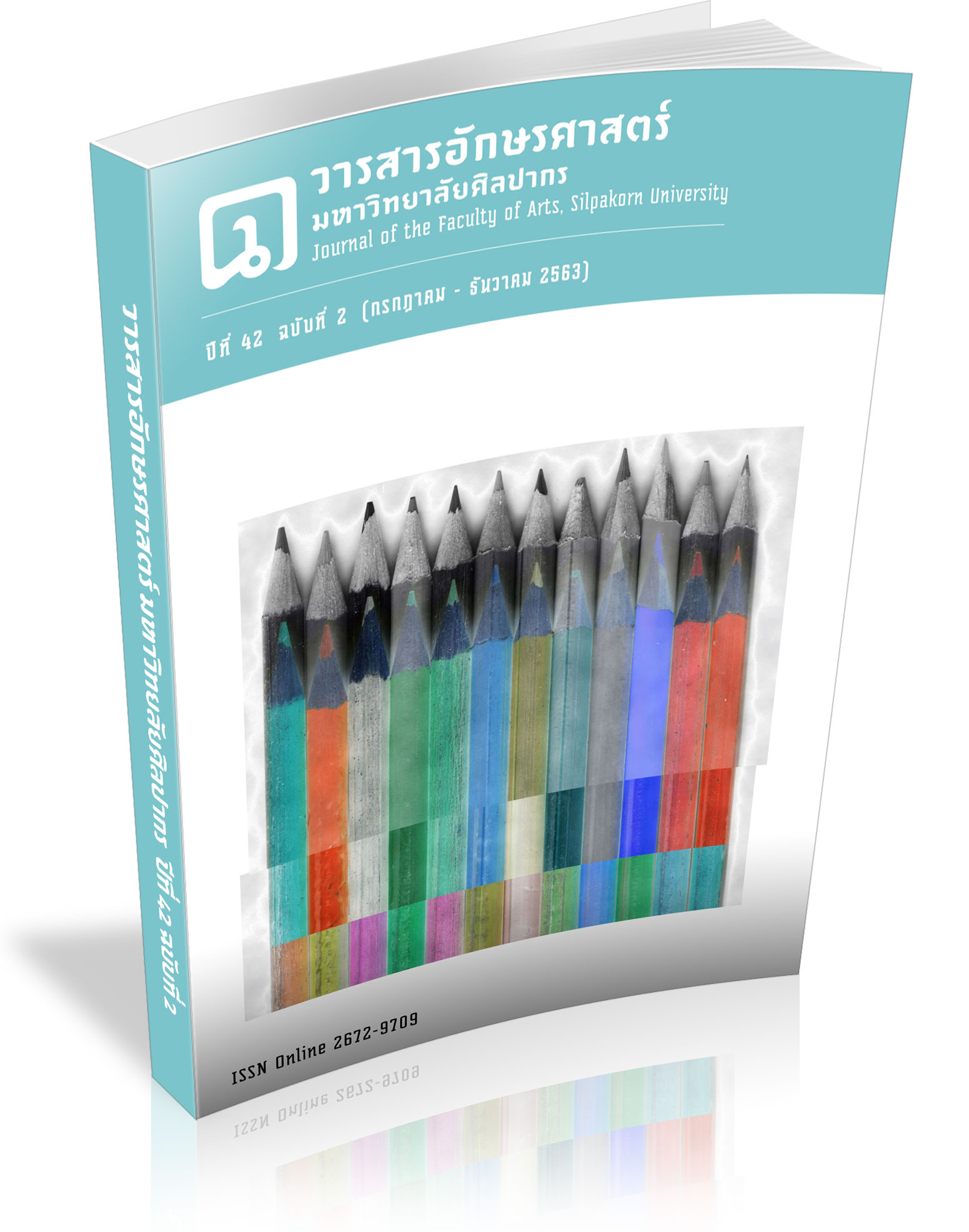Kengtung Metallic Thread Tube Skirts
Cultural Transmission and Reproduction in Contemporary Lanna Culture
Keywords:
Kengtung metallic thread tube skirts, cultural reproduction, contemporary Lanna cultureAbstract
The objectives of this research paper are to study (1) the history, meaning, and roles of the skirts within Kengtung court, (2) it re-evaluation in the contemporary context, and (3) factors and social contexts that contribute to such re-evaluations. The research employed a qualitative methodology combining documentary approaches and field studies. The findings are as follows: (1) Metallic thread tube skirts used by ladies of noble status in the Kengtung court were among the discerning garment items representing the wearers’ ethnic identity and nobility. They were woven by court ladies, with the weaving techniques passed on from one generation to the next. (2) The tradition metallic thread tube skirts have obtained new meanings as a kind of Lanna-style garment piece, one of the cultural products that projects the notion of multi-cultural fusion in contemporary society. (3) The value of the skirts as an object and the social context in which they are worn, represent to two main factors contributing to the symbolic transformation of metallic thread tube skirts. The presented findings contribute new facets to the study of Lanna textiles and clothing and may also be of value to other areas of folklore studies.
Downloads
References
Conway, S. (2003). Power dressing Lanna Shan Siam 19th century court dress. Bangkok: The James H. W. Thompson Foundation. (In Thai)
Juathong, P. (2015). City of Chiang Tung. Chiang Mai: Chiang Mai University. (In Thai)
Kasetsiri, C. (2009). Myanmar: history and politics. Bangkok: Social Sciences and Humanities Textbook Project Foundation. (In Thai)
Natalang, S. (2015). "Creative traditions" in contemporary Thai society. Bangkok: The prince maha chakri sirindhorn anthropology centre. (In Thai)
Pakdeenarong, P. ( 2004). The Politics of Aesthetics, Tube Skirts and the process of reviving Mae Jam culture. Master Thesis (Social Development Program) Graduated School, Chiang Mai University, Thailand. (In Thai)
Panitchapun, V. (2004). Tai fabrics and textiles. Bangkok: O.S.Printing House. (In Thai)
Panitchapun, V. (2013).Tai Khun of Chiang Tung. Phayao: Lanna Art and Culture Center Project (Tai) Phayao University. (In Thai)
Prajuabmaua, C & Pratyaporn, V. (2004). On ethnic education guidelines. Bangkok: The prince maha chakri sirindhorn anthropology centre. (In Thai)
Ritpen, S. (2013). Sao Nang. Chiang Mai: Max Printing. (In Thai)
Seangngam, P. (2015). Tai Khun Temple, Keng Tung, Shan State, Myanmar in the globalization. Master Thesis (Regional study) Graduated School, Chiang Mai University, Thailand. (In Thai)
Sripasang, V. (2009). “The Queen Lanna Tube Skirts” in 80th Anniversary of Jao Duangdeun Na Chiang Mai. Chiang Mai: Tourism Authority of Thailand Chiang Mai Office. (In Thai)
Tangtavonsirikul, C. (1998). The symbol of Wiang Chan woven fabric. Bangkok: Social Sciences and Humanities Textbook Project Foundation. (In Thai)
Santasombut, Y. (2008). Power, space and ethnic identity, politics, and culture of a nation state in Thai society. Bangkok: The prince maha chakri sirindhorn anthropology centre. (In Thai)
Downloads
Published
How to Cite
Issue
Section
License
ผู้เขียนบทความต้องยินยอมในข้อกำหนดต่าง ๆ ของวารสารก่อนส่งบทความตีพิมพ์




